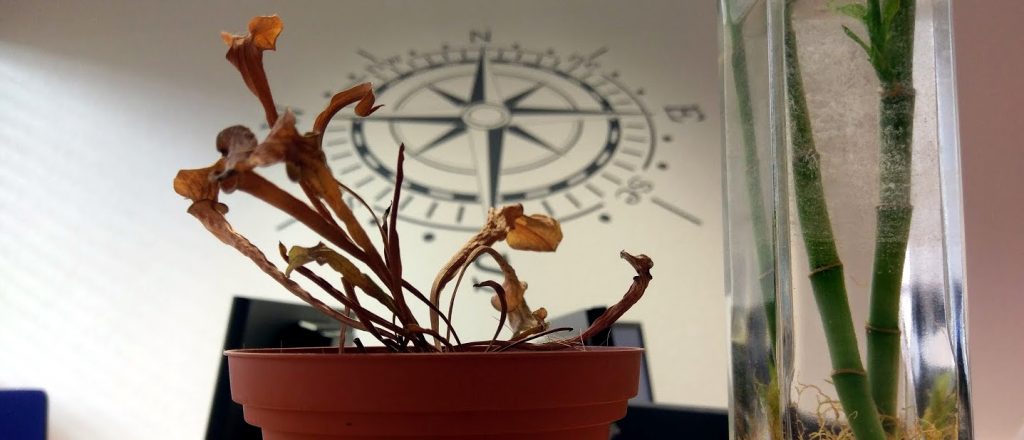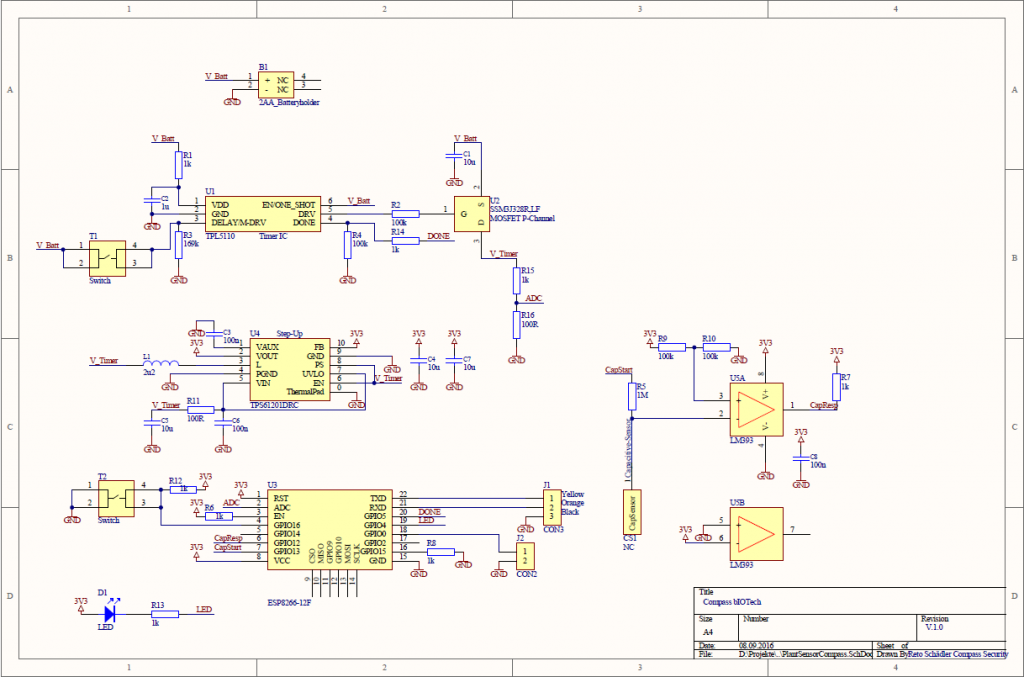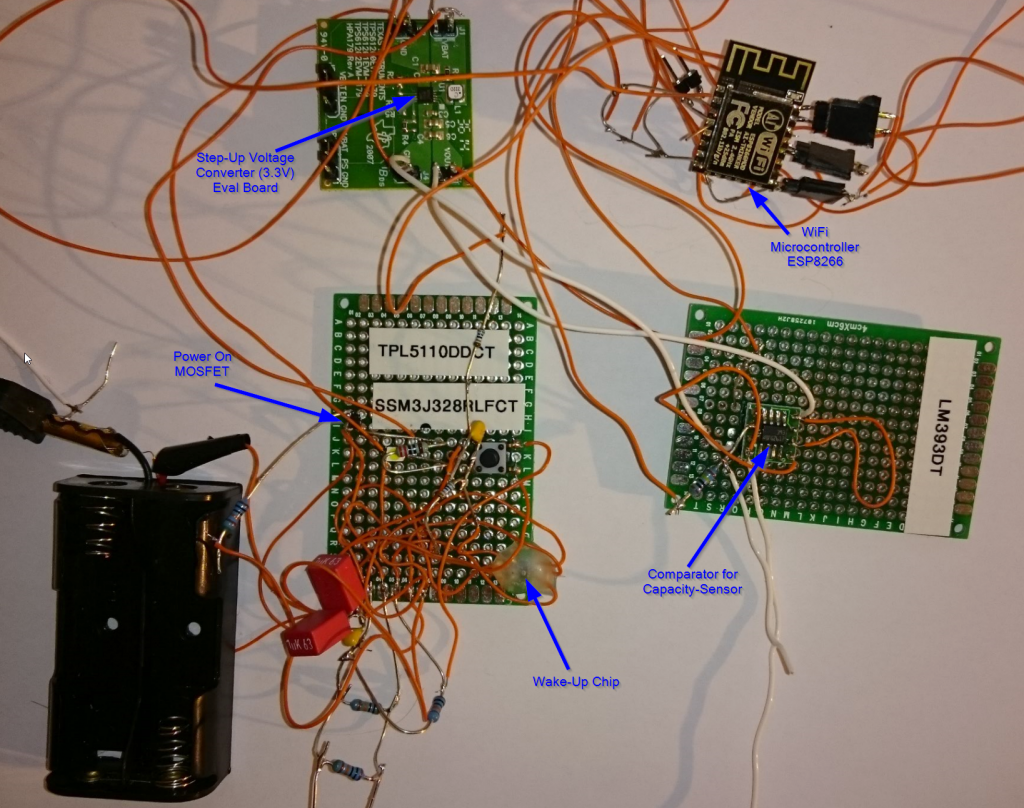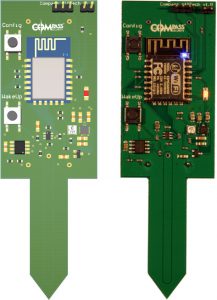The “Internet of Things” (IoT) grows quickly. More and more devices are connected to the Internet to automate tasks and simply life. Fridges automatically order milk, cars are taught to self-drive via a simple update and bridges send live updates about their structural integrity.
According to Gartner’s 2016 Tech Trends, IoT will define the shape of tomorrow’s business. At Compass, we also appreciate the impact of connected devices in the near future, in terms of how they can make our lives easier, and how they can make our information more exposed. With this in mind, we recently opened a new security training on the basics of IoT and their vulnerabilities.
Compass bIOTech v1.0 is our own piece of Hardware in the grand IoT puzzle of devices. This smart device has been designed to measure the moisture level of plant pots using a capacitive sensor. It then connects to the cloud (Hacking-Lab) and an e-mail alert can be sent in case of low humidity level.
But before it reached its v1.0 state, the Compass bIOTech sensor went through multiple stages of development between an original idea and its realisation:
1 – Idea
To give a little life to your office, or to make your living room livelier, green stuff is always a nice addition to your everyday environment. Problem: these things need attention! We all at some point forgot to water a plant, and came back after a day, a weekend, or a longer holiday to find it dried out.
At Compass, we decided to tackle this problem and to grow ourselves a green thumb, green like a circuit board! With no time to spare, Reto Schädler started the design, with a few necessary features in mind:
- one must be able to configure the device’s humidity threshold,
- a status should be readable directly on the device,
- the thing must communicate with a cloud,
- the battery should last long.
2 – Circuit Board Design
The capacitive humidity sensor consists of a circuit path that is charged via the resistor R5. Using this, we can measured how long it takes until the voltage is half of the operating voltage.
The 32bit ESP8266 Microcontroller Chip is based on the Arduino development environment and has built in Wifi capabilities. It requires an operating voltage of 3.0 – 3.6 Volt and runs at 80MHz.
Since the two AA-Batteries have a voltage level at max. 3V, a Step-Up Convert to 3.3V is necessary. And because of the required battery life time, a Wake-Up chip is used to cut power supply via MOSFET.
3 – Realisation
In configuration mode, the chip serves as a Wifi AP and provides DHCP to connecting devices and a web GUI for configuration purposes. In measurement mode, the device connects to the configured SSID/password and submitts moisture level, battery level and firmware version to a dedicated Hacking-Lab services.
4 – Where to get your own bIOTech device
We will be giving away a first bunch of bIOTech devices at Swiss Cyber Storm on October 19th in Lucern. Visit the conference and walk by our both. We will be glad to equip you with your own green thumb.
For those who can’t make it to the conference, stay tuned and sign-up for our next IoT security training where we will tinker with the devices interfaces and security issues.




Leave a Reply